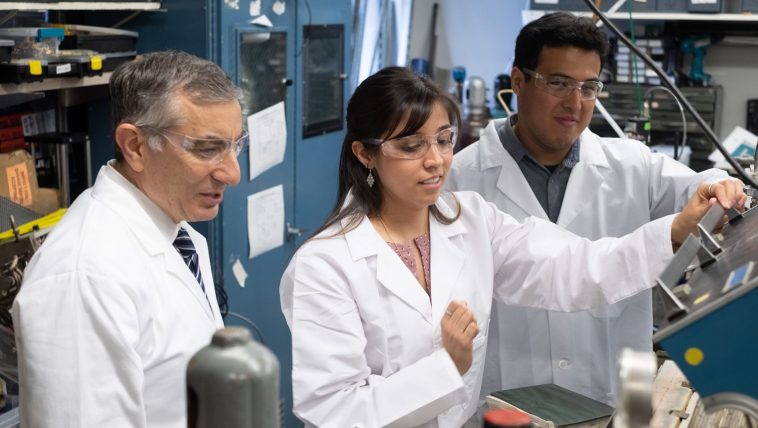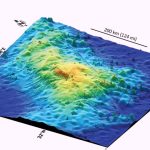[Originally published as Scientist Who Prays for Insight Revolutionizes Recycling]
I have written about Dr. James Tour before. He is a giant in the field of synthetic organic chemistry. Because he spends his days making molecules, he knows that, despite the bluster coming from evolutionary evangelists, we have absolutely no idea how the molecules of life could have been formed from nonliving matter. As a good scientist, he doesn’t rule out the possibility that it might have happened. However, he tries to educate people about how little we know regarding this hypothetical process so they are not fooled by the lies they hear from their teachers and read in their textbooks.
I am writing about him again because he and his group just published a paper that will truly revolutionize the recycling industry. In fact, it turns recycling into upcycling, because it makes the waste into something more versatile than the original products. The process described in the paper can take anything that is mostly carbon (like plastic) and convert it into graphene, which is many times stronger than steel but much more lightweight and flexible. This makes it ideal in many applications. As the University of Manchester says:
Transport, medicine, electronics, energy, defence, desalination; the range of industries where graphene research is making an impact is substantial.
Interestingly enough, graphene comes in two forms, and the form that Dr. Tour’s process makes is the easier one to use in most industrial applications.
Making Graphene
The process involves taking any material that contains high amounts of carbon, grinding it into a fine dust, and zapping it with enough electricity to break every bond in the material. All non-carbon atoms form molecules that are vaporized, and the carbon is left behind in the form of graphene.
In their experiments, they used the plastic material from a truck’s bumpers, seats, carpets, and gaskets. They put it through their process and gave the graphene they produced to the Ford Motor Company, which then used it to make new plastic components for their trucks. These new components performed the same as components produced with unrecycled graphene.
According to their paper, published in the journal Nature:
A prospective cradle-to-gate life cycle assessment suggests that our method may afford lower cumulative energy demand and water use, and a decrease in global warming potential compared to traditional graphene synthesis methods.
Who This Scientist Is
This incredible achievement is noteworthy enough, but I want to spend a moment on the man behind it. Dr. Tour is a Christian and has written a detailed account of how his faith helps his scientific research in a document entitled Faith of a Scientist: The Impact of the Bible on a Christian Professor. In it, he states:
As a scientist, when posed with scientific mysteries that have presented themselves in my research, I have so often bowed my heart and prayed, “Lord, make your light shine on this darkness. When no others can see, please Lord, let me see.” On many occasions, when graduate students have brought their puzzling laboratory results and laid them on my desk, I have been as baffled as they. So remembering [Psalm 112:4], which I had long before committed to memory, I pray for light, and God answers. Surely, meditating on God’s word can cause light to arise in darkness even for the challenges that confront our secular careers.
While this might sound odd to closed-minded secularists, Dr. Tour is not alone in using his faith to aid his scientific work. In fact, the father of the scientific method, Roger Bacon, wrote:
For the grace of faith illuminates greatly, as also do divine inspirations, not only in things spiritual, but in things corporeal and in the sciences of philosophy;¹
Copernicus put the sun at the center of what he called “the world” because that made the system more orderly, and he said that this made more sense, since the world was made by “the Best and Most Orderly Workman of all.”²
Kepler use the Trinity as a basis for his model of the universe, with the sun at the center representing God the Father, the sphere that held the stars representing God the Son, and the space in between representing God the Holy Spirit.
James Clerk Maxwell, the genius who discovered that light is an electromagnetic wave, also prayed to received scientific enlightenment.
There are those who say that Christianity and science are incompatible. In no uncertain terms, scientific luminaries from Roger Bacon to Dr. James Tour demonstrate that this notion is 100% false.
REFERENCES
- The Opus Majus of Roger Bacon, Robert Belle Burke (trans.), (Russel & Russell, Inc. 1962), p. 585.
- Nicolaus Copernicus, On the Revolutions of the Heavenly Spheres, R. Catesby Taliaferro (trans.), Great Books of the Western World, (Encyclopedia Britannica, 1939), vol. 16, p. 508.






